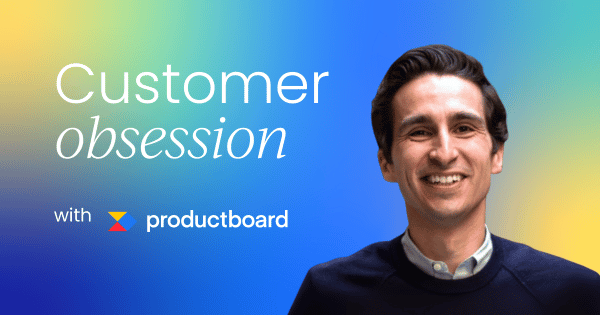Have you ever built a product prototype you were sure would be a hit, only to have the customer ask for some totally unexpected changes?
That’s exactly what happened to me back when I was at DocuSign. We developed a seamless, frictionless e-signature product, tailored to make the signing process as easy as possible for our customers. But when we presented it to a key customer in the life sciences sector, they asked for something surprising: more friction.
In industries like life sciences, compliance and legal constraints often drive product design. In this case, the customer’s requirements were shaped by strict regulations around document handling and signatures, which meant they needed a more controlled, deliberate process.
This experience taught me something powerful about the role of product ops: it’s not just about listening to the customer, it’s about understanding the full context that shapes their needs.
This is where building customer-obsessed product teams comes in. Product ops can surface key insights early on, helping teams stay on track and be truly customer-centric.
So, in this article, we’ll explore three strategies for building customer-obsessed product teams:
- Build a voice of the customer (VoC) program.
- Apply a strategic lens to that program.
- Create a culture of customer-centricity – not just a system.
Let’s jump in!
Strategy #1: Building a VoC program
Because we’re all about being customer-obsessed, we’ll start with one of Productboard’s customers. Meet Shelly, the Head of Product Ops and Delivery Excellence at Autodesk.
As Shelly put it:
“We had requests coming in through dozens of different channels – cocktail napkins, carrier pigeons, whatever it might be.”
There was no good way to track or centralize this feedback, and it had a significant impact on her team and organization.
With no centralized system, 80% of incoming user requests had to be manually assigned – routed, rerouted, and processed by hand. As you can imagine, this was a ton of work.
Processing time ballooned from days to months, and prioritization wasn’t based on data. Instead, it was driven by the loudest voice in the room, which is never the best approach.
So, what did Shelly do to turn things around?
First, she centralized all the feedback in one place. She made that the single source of truth and communicated this to the entire organization. From then on, everyone knew where customer feedback would live.
Next, Shelly automated the follow-up process for stakeholders. This made it easier for people to submit feedback, knowing they’d get a response. With a streamlined system, the product teams and go-to-market teams could align more easily. Shelly’s team held regular reviews, and the program became a repeatable process.
Key components of a VoC program
There are a few crucial building blocks for any VoC program. These components will set you up for success:
- A central source of truth that everyone can access.
- A strategic lens that makes sense of the insights you collect.
- Prioritization and planning based on customer evidence.
- Easier stakeholder alignment through data-driven decisions.
- A feedback loop that lets stakeholders track the status of their feedback, adding inherent value.
- An executive sponsor to champion the program.
Practical advice for setting up a VoC program
Let me share a couple of practical pieces of advice for setting up a solid VoC program.
First, get a great executive sponsor. It doesn’t have to be a product leader. At DocuSign, the head of solution consulting sponsored our VoC program. Look beyond your product team – find someone in the organization who is customer-centric, talks about customer stories, and can advocate for the initiative. Having that executive support makes a huge difference.
Second, don’t try to boil the ocean. It’s tempting to want everything perfect right from the start – centralize all the data, nail the processes, and capture feedback from everywhere. However, it’s better to start small. For example, if your company’s focus is on targeting enterprises, tailor your VoC program around that. Once you get a few wins, you can iterate and expand from there.
Shelly, for instance, went from a six-month unstable roadmap to a two-and-a-half-year predictable roadmap for part of her product organization. While there’s always room for adjustments, this kind of predictability made a huge difference for her team and allowed them to plan for the future.
Strategy #2: Crafting a strategic lens for your VoC program
One of the most powerful things Shelly did to enable a successful VoC program was crafting a strategic lens. This is the structured approach that helps you make sense of all your customer insights and data. Let’s look at another example.
Meet Kraig, the VP of Product at Arena PTC. When he started, his team was using a simple spreadsheet to track feature requests.
While this may seem like a reasonable starting point, it led to a lot of issues: collaboration was reactive, alignment between engineering, go-to-market teams, and executive leadership was difficult, and decision-making was largely driven by the loudest customers, not necessarily the most impactful features to build.
So, what did Kraig do? He created a strategic lens for his voice of the customer data. He categorized feedback into themes that aligned with his business, then set criteria for frequency and strategic relevance. This lens was specific to Arena PTC’s needs, but it’s a great example of how you can tailor your VoC strategy to your own organization.
Setting your own strategic lens
To help you get started with crafting your own strategic lens, here are some key criteria to consider:



 Follow us on LinkedIn
Follow us on LinkedIn



